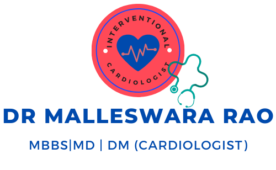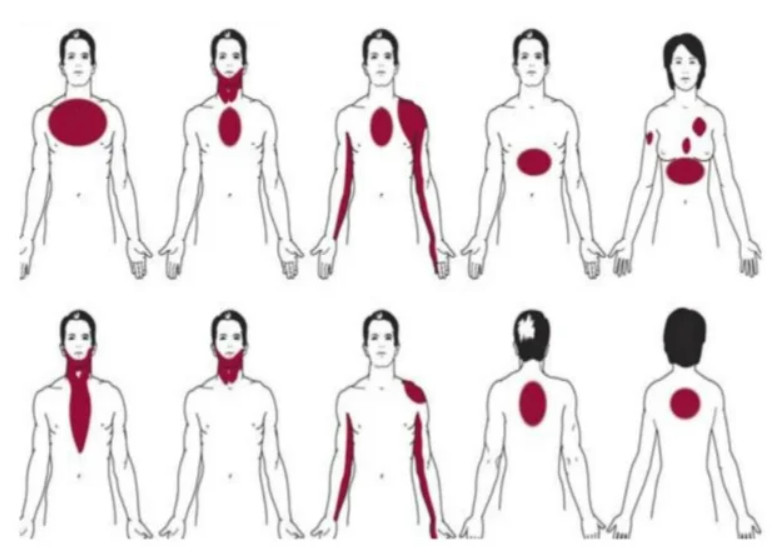Introduction: heart pain or Angina
Chest pain due to gradual narrowing of arteries supplying the heart is called angina or heart pain. We have described how heart
pain is described by a patient. It does not apply to heart attack. This pain is a manifestation of crying heart muscle. Angina is often due to coronary artery disease (CAD)
Heart pain is likely to be gradual in onset, It is rarely sudden onset except in heart attack. Activity, such as exercise, sex, bath, washing cloths and climbing stairs that increases oxygen demand of the heart precipitates heart pain. It is shown in below image. Heart pain does not change with respiration or position. It means its intensity does not vary if you take deep breath or cough vigorously or stretching of the muscles.
Heart pain is often described more as a discomfort than pain, and it is often difficult for the patient to describe the exact nature of the pain. Various terms such as squeezing, pressure, crushing, burning, heartburn, fullness in the chest, band-like sensation, knot in the centre of the chest, lump in throat, ache, and heavy weight on chest are described by the patient. It is usually not sharp, fleeting, knife-like, stabbing, or like “pins and needles”.
Heart pain often radiates to other parts of the body including the upper abdomen (epigastrium), shoulders, arms (upper and
forearm), wrist, fingers, neck and throat, lower jaw and teeth (but not upper jaw), and not infrequently to the back (specifically the interscapular region). It is depicted in the below mentioned image.
Heart pain is not localised to one specific spot; rather, it is a diffuse discomfort that may be difficult to localize. The patient often indicates the entire chest, rather than localizing it to a specific area by pointing a single finger. Heart pain is usually brief (two to five minutes) and is relieved by rest or with nitroglycerin tablet or spray.
What are the tests available for the diagnosis of angina?
Physical exam
- During the physical examination, the doctor will listen to your heart through a stethoscope, looking out for murmurs or abnormal sounds that could indicate coronary artery disease. A physical exam will also include assessment of type of pain, presence of tenderness, and restriction of movement at any joint.
Electrocardiogram (ECG)
-
- An electrocardiogram (ECG) measures electrical activity of the heart. It can identify ischemic changes suggestive of blockages in the coronary arteries. Presence of certain changes like ischemic t wave inversions, LBBB and other st -t changes are indicator of coronary artery disease. It’s usually not enough for a complete diagnosis of CAD . It just gives some clues to your doctor to predict coronary artery disease in you.
Two-dimensional echocardiogram
- A two-dimensional echocardiogram is a non-invasive diagnostic test. This test uses sound waves (echoes) and produces a moving picture of your heart. 2d echo test can not visualize coronary arteries and hence not much helpful for evaluation of heart pain or angina. Blockages can not be seen directly. Like ECG or EKG test, 2d echo test can give some indirect clue for blockages. However, stress echo test can identify blockages in coronary arteries. Stress echo is a special type of 2d echo where 2d echo is being done when the heart is under stress( due to exercise on treadmill or drug)
treadmill test
- A treadmill test is a kind of cardiac stress test where you will be asked to walk on a treadmill in a controlled environment while your ECG or EKG is continuously monitored. The test is useful in diagnosing coronary artery disease (CAD) as a cause for angina. Stress in a CAD patient produce certain changes in treadmill test. Then, this is called a positive treadmill result.
CORONARY ANGIOGRAM OR CAG
- An angiogram is a test that involves injecting dye into your coronary arteries to see if there are blockages or narrowing in your blood vessel in a special room called Cath lab either from wrist or groin. This is the gold standard test for diagnosis coronary artery disease or angina.
Treatment for angina or heart pain
Once chest pain is confirmed to be angina or heart pain. you will be advised lifestyle changes and given further management plan. If severity of angina is mild to moderate, you will be prescribed medicine. If pain does not subside after a trial period of 2 to 3 months, heart stent surgery (angioplasty) or CABG is done based on angiogram report
- Medication
- Heart stent surgery
- CABG surgery or bypass surgery
Medications
- Medications include blood thinners (ecosprin), cholesterol lowering drugs (statins), drugs that reduce blood pressure (beta blockers) , drugs that can increase blood flow to the heart (antianginal medications).
Heart stent surgery or angioplasty
- Procedure to improve blood flow to the heart muscle by placing stent at the area of blockage. For this. your heart specialist (cardiologist) passes a drug eluting stent (DES) over a wire through a long tube called a guide catheter. Gude catheter sits at the opening of coronary artery and is passed into the body through either groin or wrist.
CABG
- putting a bypass graft beyond the blockage via open heart surgery reestablishes flow to the heart muscle. This is a major surgery but produces long lasting results if done successfully.
Conclusion: Heart pain or angina is a clinical diagnosis but confirmed by a treadmill test or heart angiogram. You either need medicine or an intervention to get relief from angina. You should also follow a heart-healthy lifestyle.


